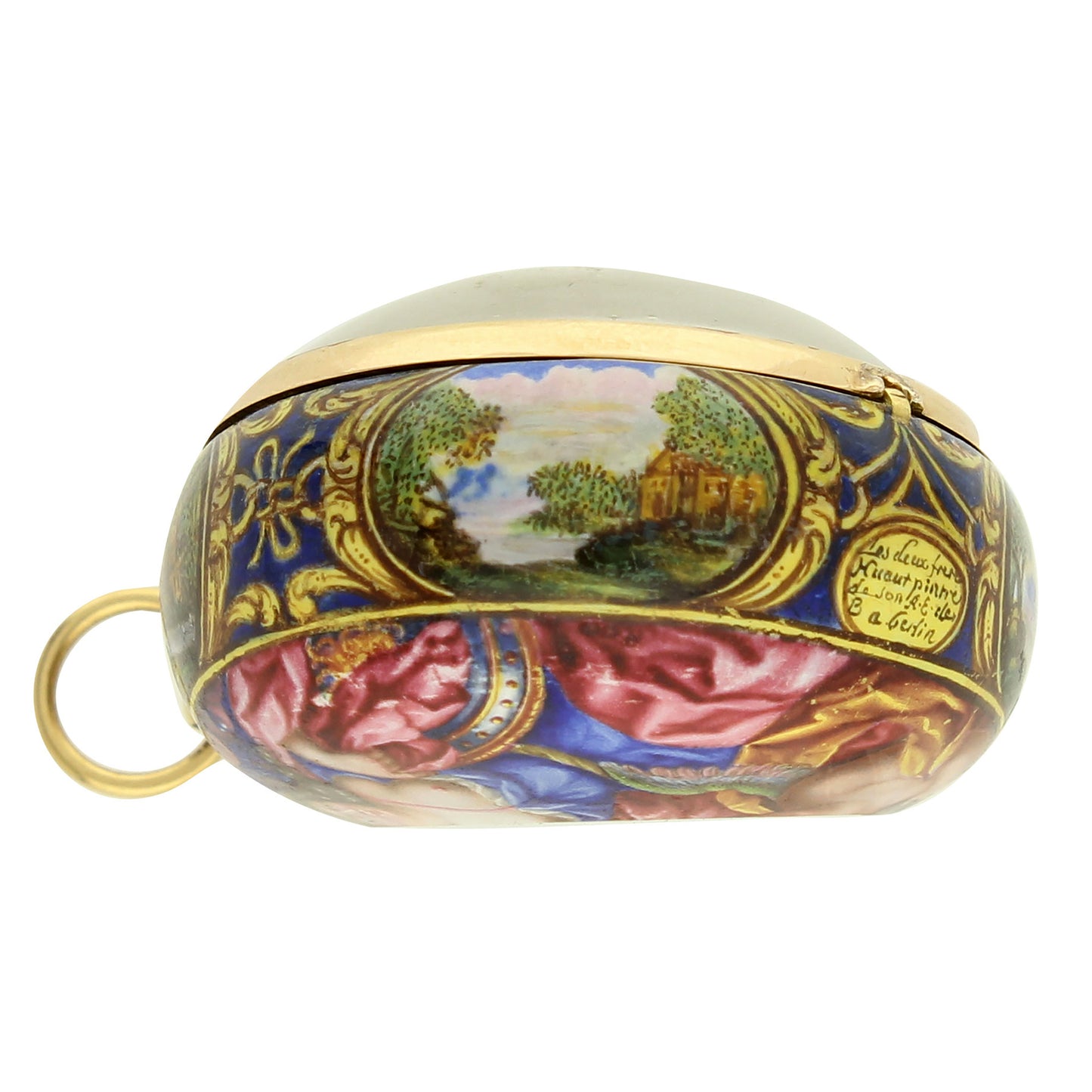






Information
- Brand: Jaq Broche, Berlin
- Made: c. 1660
- Model: Verge watch
- Reference: N/A
- Calibre: N/A
- Movement: Manual
- Material: 18ct yellow gold
- Features/complications: Made circa 1750, the polychrome enamel painted gold case features a scene depicting Athena observing a mirror held by Eros. The inside back of the case is painted with a lone traveller standing in front of a castle. The rounded case sides feature four vignettes, each depicting rural scenes and signed Huaud Le Puisné or ‘Huaud the first-born’. Movement signed Jaq Broche à Berlin. Case signed Les Deux Frères Huaut peintres le son A.E. de B a Berlin.
- Dial: White enamel dial with black outer Arabic numeral minute track with Roman numeral hour markers and gilt metal Louis XV hands.
- Case dimensions: 35mm
- Bracelet/strap: N/A
- Accessories: N/A
- SKU: 1506
Essay
This fine and rare enamel cased verge watch is an exquisite example of the prowess of Swiss enamelling from the 17th century. Geneva’s unique geographic location and reputation as a safe haven from religious persecution made it a flourishing centre of trade throughout the 17th-19th centuries with high density of talented goldsmiths, watchmakers and enamellists practicing their trade.
The Huaud (or Huaut) family of Geneva are celebrated for their distinct and beautiful style of enamelling, particularly their work in miniatures and watch cases. Their outstanding work is characterized by their rich and varied use of bold colours, in contrast to the pastel shades of contemporary French enamellers in Blois. The enamel cases decorated by the Huaud family are regarded as exceptional works of art in their own right, with examples of their work in the collections of major museums around the world including the Met (New York), the Louvre (Paris) and the V&A (London).
Jean-Pierre Huaud entered a partnership with his brother Ami in 1682, when the brothers moved to Berlin in an attempt to find the support and patronage for their luxury items. In 1686 they were joined by their brother Pierre II, who helped them obtain appointments as enamel painters to Friedrich Wilhelm III (1657-1713) who would become the Duke of Prussia and Elector of Brandenburg, a position they held until their return to Geneva in 1700. The brothers continued working together until the death of Jean-Pierre in 1723 and Ami a year later
The Huaud (or Huaut) family of Geneva are celebrated for their distinct and beautiful style of enamelling, particularly their work in miniatures and watch cases. Their outstanding work is characterized by their rich and varied use of bold colours, in contrast to the pastel shades of contemporary French enamellers in Blois. The enamel cases decorated by the Huaud family are regarded as exceptional works of art in their own right, with examples of their work in the collections of major museums around the world including the Met (New York), the Louvre (Paris) and the V&A (London).
Jean-Pierre Huaud entered a partnership with his brother Ami in 1682, when the brothers moved to Berlin in an attempt to find the support and patronage for their luxury items. In 1686 they were joined by their brother Pierre II, who helped them obtain appointments as enamel painters to Friedrich Wilhelm III (1657-1713) who would become the Duke of Prussia and Elector of Brandenburg, a position they held until their return to Geneva in 1700. The brothers continued working together until the death of Jean-Pierre in 1723 and Ami a year later














